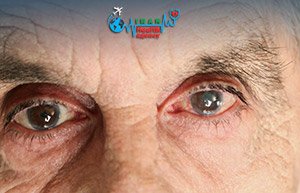Cataract surgery in Iran
- Duration: 1 – 2 hours
- Stay Time : 8days
- Anesthesia: General
- Recovery time:3 to 6 Months
Cataract surgery cost in iran
Cataract surgery in Iran , Iran as a destination, pioneer in eye surgery and eyesight health filed, and Outstanding outcomes at super affordable cost in internationally standardized hospital and clinics were reasonable temptations to health tourists travelling abroad for medical services such as cataract surgery.
And too many other question like those. Stay tuned to find the right answers to your all concerns.
Today I was asked to write an article about eye surgery in Iran the subject that is technically called CATARACT. When it comes to starting it, I remember the other day, reading some quotes and came across some sentences about vision and eye sight
“The health of the eye seems to demand a horizon. We are never tired, so long as we can see far enough” Ralph Waldo Emerson says
“when you look into body health, look into eyes health”
or another beautiful sentence saying
“As far as your eye can see, the universe can see even farther.”
The sentences above are vivid and expressive description for importance of eyes in our body and life.
Let’s start it with what cataract is?
Basically, any clouding on the lens is called cataract. The inner lens in the eye is a protein lacking in the blood vessel and the nerve whose primary function is to break the light and also to balance the measure of light entering the eye, in order to fulfill the eye function eyes to see objects at close or far distances.
If I want to simulate cataracts, I can come up with frosty or fogged-up window. Obviously looking out through an opaque window wouldn’t result in Transparency such as cataract that leads to have difficulty in driving, reading and detecting the details.
Since cataract is a serious obstacle to the daily activities, the early treatment ends up more effective outcomes. Cataract in Iran and persuading reasons is main goal of next paragraph. Keep reading please:
But before that, it is not bad to take a look at the city of Shiraz, which is one of the most beautiful cities in Iran, and medical tourism services in Shiraz were performed using the best surgeons and hospitals.

Is an eye surgery in Iran worth extra miles?
Complaining about extra miles, distance is totally Understandable. But Iran’s positive points make the negative points trivial. For instance:
The availability of best eye surgeons in Iran:
As mentioned before, Iran is a pioneer platform for cataract or any other eye care services.
Logically. the main reason for achieving this label is only existence of plenty of experienced and board-certified cataract surgeons in Iran or ophthalmologists.
Iranian eye surgeons graduated from American and European top-rated universities are neck and neck with all other surgeons in proficiency and expertise all around the world.
Second significant reason is standard and qualified eye care centers:
Abundance of internationally qualified hospitals and clinics and their importance on attraction health seekers’ attentions are not deniable.
Best eye clinics in Iran, Tehran, Mashhad, Shiraz, Isfahan, Ahvaz, Tabriz and Kish island enable the country to provide patients with infinite services throughout Iran.
Money saving procedure:

In recent years, due to the sharp decline in the value of Iranian currency, all medical services are performed at the most affordable price while quality doesn’t have the slightest effect on this low price.
How much is the cataract surgery price in Iran?
Such as any other countries there are some elements influencing on final price.
Some factors like cataract surgeon’s reputation, grade of clinics, case severity and destination, but averagely:
Cataract surgery in Tehran costs:450$
Cataract surgery in Ahvaz costs:400$
Cataract surgery in shiraz costs:400$
cataract surgery in Mashhad costs:450$
cataract surgery in Tabriz costs:400$
cataract surgery in Isfahan costs:400$
Have a look at table below regarding cataract surgery cost in Iran to comparing to other countries.
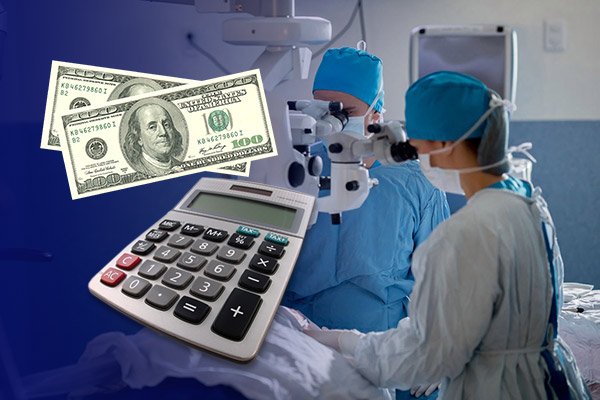
How is the cataract surgery procedure in Iran?
Actually Cataract surgery in Iran involves removing the opaque lens and replacing it with a clear artificial lens. An artificial eye lens is called an intraocular lens, which sits just in place of the natural lens and remains a permanent part of the eye.
For some people, other eye problems can make them unable to use an intraocular lens(IOL). In such cases, the vision can be improved with glasses or contact lenses after the cataract is removed.
Cataract surgery in Iran is usually performed under local anesthesia and on an outpatient basis and you do not need hospitalization after surgery. During surgery, the doctor uses anesthetic to numb the eye and patient will be awake during the operation.
Patients are often asked to be show up at the hospital 1 hours before eye surgery. Before surgery, eye drops are used to relieve pain, reduce inflammation, reduce the risk of infection, and open the pupil completely.
The surgery usually lasts 20 to 30minutes, after which the patient is cared for 2 hours and then can go home.
But there is some preparation must be fulfilled before travel to Iran:
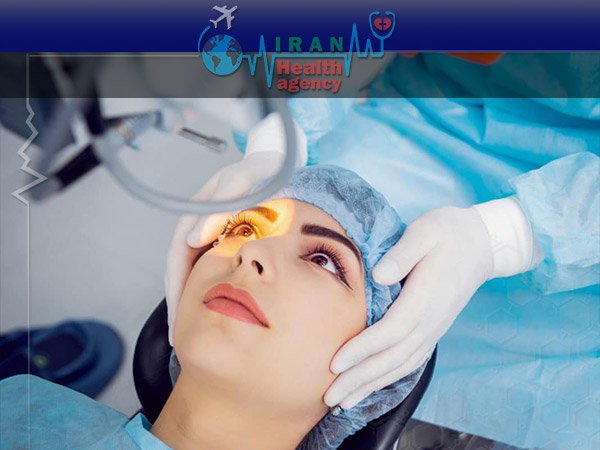
What are the preparation steps before cataract surgery in Iran?
The eye surgeons diagnose in Iran will be on a basis of examination and question.
Evaluation of existing condition of eyes to figure out which type of treatment and lens is most appropriate and productive.
You might be also asked for general check-up lab test to minimize all potential risks.
In consultation session, all your expectation of cataract surgery in Iran will be taken into account and potential complication and risk and even outcome will be clarified.
Obviously cure has three steps: diagnose, treatment, post-op care .in this stage we will go cataract diagnose in Iran and its different methods.
Let me know the techniques of CATARACT diagnose in Iran?

Common and traditional chart:
This test uses a grid of letter and digits that shrink gradually line by line in order to determine your ability to read them. Each of your eyes is tested while the other is closed. Your doctor will determine if your vision score is 20 out of 20 or your vision is impaired.
Slit-lamp microscope:
This test allows the ophthalmologist to see the anterior structure of your eye with a microscope. This slit-lamp microscope creates a gap in the cornea, iris, lens and the space between the iris and the cornea using a sharp light line. It also illuminates those areas. This light gap helps the physician to see the eye components several times larger than normal, making it easier for the physician to detect minor anomalies and defects.
Retinal evaluation:
To prepare for the retina test, your doctor will employ a special drop into your eye that opens the pupils, making it easier for the retina to be examined. An ophthalmologist can look for signs of cataract in the lens of the eye using a slit-lamp or a special tool called an ophthalmoscope.
What are the signs of cataract?
When it comes to cataract, lesions are not interruptions in eye function until they are large enough. There are few symptoms that can help your eye surgeons diagnose this complication.
Blurred or Dark vision
Poor vision at night
Diplopia problems in one eye
- Color darkening
- Availability of glare in eyesight
- Aura of light around the lamp
- Increment of eye sensitivity to radiation
Factors that cause the risk of cataracts:
- Ageing
- Diabetes
- Exposure to sunlight;
- smoking;
- Obesity
- Hypertension;
- Inflammation or previous eye injuries;
- Previous eye surgery;
- Long-term use of corticosteroid drugs;
- Excessive alcohol consumption.
- Congenital cataract:
Some people were born with the cataract or having cataract symptoms during childhood.
This type of cataract can be genetically caused by maternal intrauterine infection or trauma. If the mother has been infected with intrauterine infections such as rubella, measles, scarlet, etc. during pregnancy, she is more likely to give a birth to a baby with cataract. Congenital cataracts do not always affect vision and are usually treated immediately after diagnosis if they affect vision.
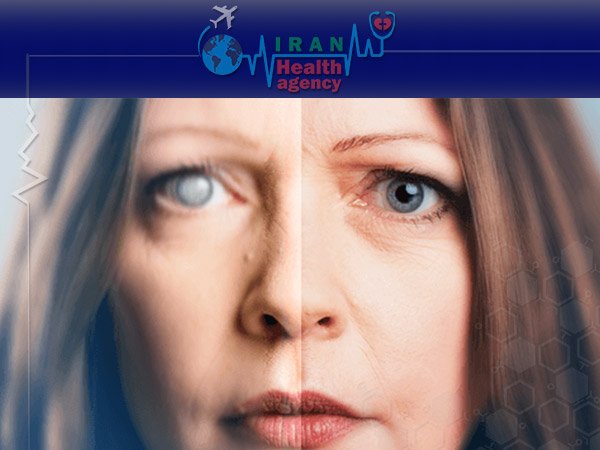
When is most appropriate time for having cataract surgery in Iran?
Ask your ophthalmologist if surgery is right for you. Most ophthalmologists recommend surgery when cataracts begin to affect a patient’s quality of life and disrupt their daily routine such as studying or driving at night.
It is up to you and your doctor to decide on the right time for surgery. Most people do not need immediate surgery because cataracts generally do not cause serious damage. But the disease usually progresses faster in people with diabetes.
Delay in surgery usually will not have a significant effect on the process of improving vision. So if you decide to have surgery, take the time to discuss the benefits and risks of this surgery and consult your doctor.
What are the different types of cataract surgery in Iran?
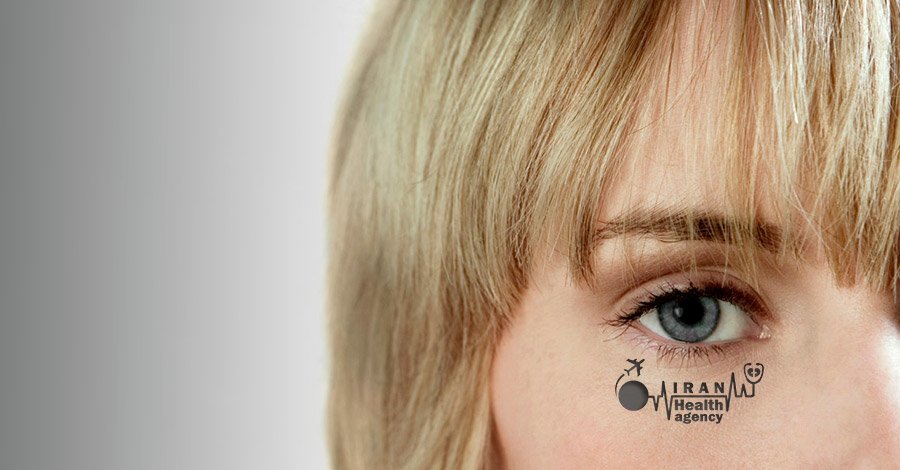
Cataract surgery in Iran is usually performed in two methods:
Intra-capsular cataract extraction
During the cataract surgery by the first type (intra-capsular) the eye lens with its surrounding capsule get extracted therefor any free space will not be left for intraocular artificial lens implantation.
This method is currently almost abandoned and is only used in certain cases, such as when the lens is half dislocated or there are no possibilities of lens capsule saving.
Extracapsular cataract extraction
During the extracapsular cataract surgery; after opening the anterior portion of the lens capsule, internal contents of capsule are removed and the lens capsule chamber can be used as an empty place for an intraocular lens placement.
This procedure is done in two forms:
- with large incision
- with small incision
while extracapsular cataract surgery performance with a large incision, the incision about 9 to10 mm in length, will be made where cornea attaches to the sclera (limbus), and after opening the anterior capsule, the lens nucleus will be extracted and after washing the remaining external ingredients of lens, the lens is inserted inside an eye and the incision is closed with1 to 2 sutures. About two to three months later, the sutures are removed. So it takes about two to three months for the vision to reach a relatively normal level.
Therefore, the main drawback of this method is its long recovery time. Since this usually produces some astigmatism, the vision may not be 100% and may need the glasses to be fully corrected.
During the extracapsular cataract surgery in Iran with a small incision, the 3 mm incision is made in order to remove the lens contents. This means that the lens core is shattered inside the eye and then suctioned out. This method includes two types.
1: Phaco-emulsification technique: It helps to crush the lens core using ultrasound energy.
2. Phaco-laser technique: which helps to crush the lens core with laser energy.
Ultrasonic energy is now utilized in more than 97% of cataract surgeries all cross the world, in terms of better power and efficiency.
Basically when the cataract is advanced and the lens core is rigid, the phaco laser procedure cannot be performed. In fact, this method has become obsolete worldwide due to inefficiencies.
For cataract surgeries in Iran, almost 100% of the cases the ultrasound phacoemulsification method (so-called phaco) is used, but since the laser is widely thought to be accurate, this method is called the laser method.
Laser capsulotomy eye surgery in Iran:
It is important to note, sometimes, by a certain period of time after cataract surgery, the lens may become opaque and cause the Blurred vision .in these cases We normally use laser energy to open the capsule (and the path of vision).
Almost simultaneously, another important development in the design and quality of intraocular lenses appeared that refers to the usage of folding synthetic lenses.
Recently, lenses have been designed (called adaptive lenses) that greatly improve close-range vision by various mechanisms, resulting in the person seeing well close-ups without glasses.
Therefore, the most prominent benefits of small incision cataract surgery in Iran are the reduction in the amount of astigmatism caused by surgery and also the recovery and vision return shortening
The most advanced surgical procedure in the world is phaco surgery using anesthesia drops without the need for anesthetic injection or general anesthesia. In this procedure, the operation time is very short and there is no need for eye dressing.
The patient is discharged immediately after the operation and returns to work the following day.
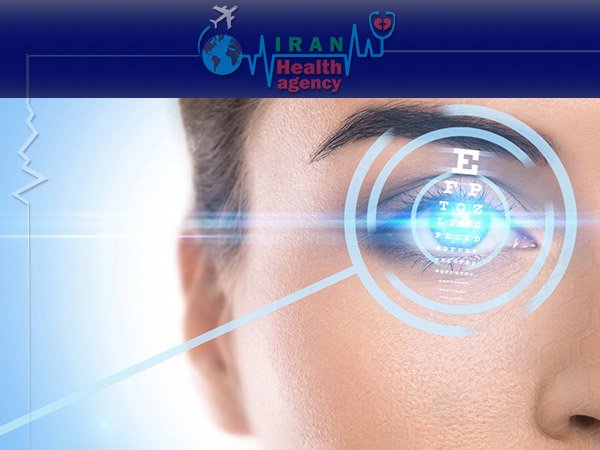
How is the phaco surgery in Iran?
Generally, cataract surgery deals with removing the opaque lens and, in most cases, inserting an intraocular lens instead of a normal and natural eye lens. However, in some rare cases, the lens may not be inserted.
The most common incision made for PHACO SURGERY IN IRAN is a 3mm incision, Because of its small size, the incision usually does not require stitches and repairs automatically after cataract surgery.
During the phaco surgery in Iran The surgeon creates a circular valve in the lens capsule – the very thin membrane that covers the lens, this process is called capsulorhexis. This procedure requires a great deal of precision because the lens capsule is 4.1 mm thick.
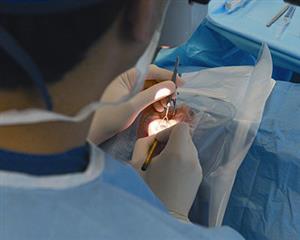
Phacoemulsification method in Iran:
During the Phacoemulsification method (with ultrasonic waves), ultrasonic waves are employed in order to break the lens into smaller particles. The particles are then extracted with the aid of a suction tube. The posterior (back) portion of the lens capsule remains intact until an artificial lens is inserted above it.
Extracapsular cataract extraction (without the use of ultrasonic waves) is used when the lens is very rigid therefore the waves used in Phacoemulsification method are not capable of breaking the lens into smaller particles. In this procedure, the incision is made about 10mm in the eye and the lens core is extracted out at once, at the end incision is sutured.
While phaco surgery in Iran, the intraocular lens is folded and sent through the small pores created inside the eye. The lens opens near the posterior capsule and reaches an optical size of 5 mm and is firmly enclosed in the capsule by the lateral arms, called haptic. There is usually no need for stitches to hold the lenses in the eye.
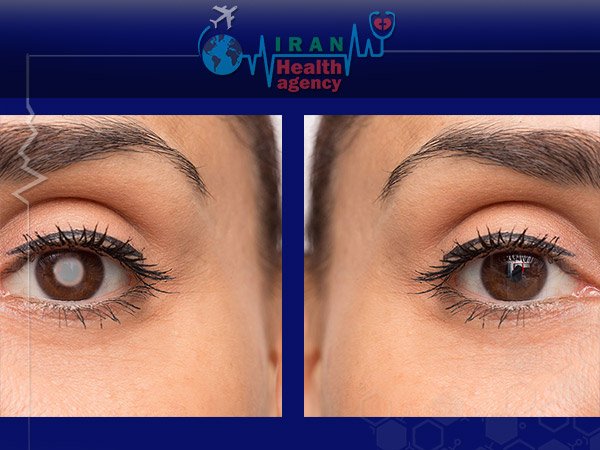
What will happen after eye surgery in Iran?
Your eye may have mild itching or light sensitivity for up to a few days after surgery. The patient is usually asked to see a doctor the same day or the next day for a re-examination. Depending on the type of surgery used and the physician’s decision.
What are the post-op instructions after cataract surgery in Iran?
the person may be asked to wear protective clothing, especially during sleep.
Within the first few weeks after surgery, the patients should not rub their eyes and also apply pressure on them. Anti-inflammatory and antibiotic eye drops are prescribed and will be gradually discontinued within 1 months after eye surgery in Iran.
How long is the recovery deration of cataract surgery in Iran?
Commonly on the day of the surgery or the day after the eye surgery, the patient can resume the usual activities such as reading a book and watching TV, but he will have to wait between two and three weeks to evaluate the vision and score of the new glasses.
Most patients need glasses to study after surgery, but in 95% of cases they do not need glasses for close-up vision.
What are the risks and complication of eye surgery in Iran?
Considering that cataract surgery is one of the safest common surgical procedures, problems can rarely arise.
Risks can range from loss of vision to mild inflammation.
Noted that, Loss of vision is generally rare, but may occur due to inflammation or bleeding during surgery or retinal detachment that may occur months or years after surgery.
Often there are minor side effects, such as corneal or retinal swelling, increased intraocular pressure, and inflamed eyelids, which are improved by drug administration.
98% of cataract surgeries are performed successfully without any specific complication, and in 95% of cases, vision will be improved. People who do not get better after surgery usually have an underlying eye condition such as age-related macular, diabetic retinopathy, or other diseases.
Can Cataract surgery in Iran be performed on both eyes simultaneously?
In case of both eyes suffering from Opaque lenses, Usually, the surgeon performs the operation in two different sessions.
Indeed, the eye surgeon in Iran will wait for the process of repairing the operated eye and then start the second eye surgery. The common gap between two eye surgeries is from 1 to 2 weeks.
Cross-eyed after cataract surgery in Iran?
We have been frequently asked whether cataract surgery will change the appearance of eyes or not? the answer is No
After cataract surgery in Iran, the appearance of one’s eyes will not change. It means That, other people will not notice a cataract surgery by looking at the patient’s eyes.
The only difference is that the intraocular lens may reflect more brightly than the patient’s own lens because of its high transparency.
The Second cataract is essential when the posterior part of the lens capsule, which has been put in place in order to protect the intraocular lens, gets obscured and causes visual opacity.
This condition, which is also called posterior capsule obstruction, may occur months or years after cataract surgery.
But nowadays, with the improvement of surgical techniques and changes in the design of intraocular lenses, the possibility of this problem is significantly decreased.
Noted that, in the past up to 50% of patients required capsulotomy because of using conventional lenses and techniques, while today, less than 10% of patients requires secondary cataract surgery.
The cause of this opacity is the growth of posterior capsule cells. Let me mention that Posterior capsule opacity treatment is simple and fast. This treatment uses a YAG laser capsulotomy.
In this procedure a laser is utilized to open a pore in the capsule to allow light to enter inside the eye.
Capsulotomy means cutting and entering the capsule and YAG stands for Yttrium-aluminum-garnet which is a type of laser device.
This technique, which is an outpatient procedure, usually takes less than 5 minutes. After that you usually stay in the doctor’s office for about 2 hours to make sure your eye pressure does not increase.
